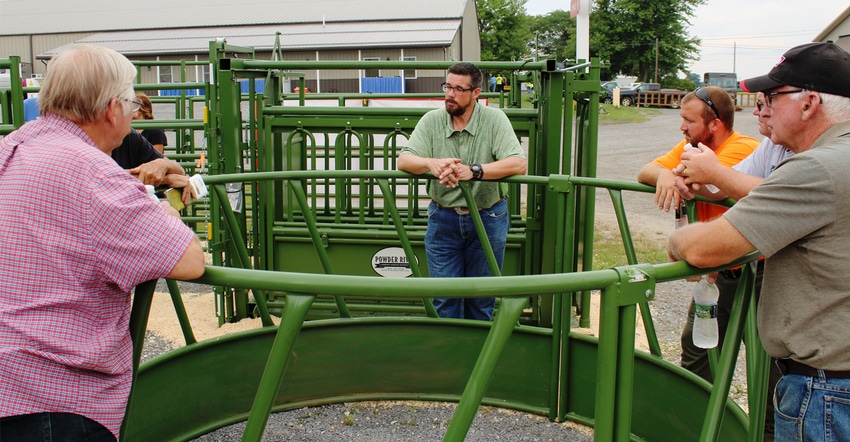August 14, 2018

By Deborah Jeanne Sergeant
As many dairy farmers transition to raising beef, they may lack experience in proper cattle handling.
"They realize they have all the infrastructure to raise beef, like barns and fenced pasture, but management is different," said Brian Adix, regional director of sales for Powder River Livestock Handling Equipment, at the recent Empire Farm Days in Seneca Falls, N.Y.
To a dairy cow, placing their heads in stanchions or wearing halters is no big deal. But unlike dairy cows, beef cattle often resist such encounters, and it can lead to tragic results.
On July 24, 68-year-old Eugene Wolfert died after being gored by a bull on his dairy farm in Middlefield, Otsego County, N.Y. Ten days later, Roy C. Bell of Perry died after being struck by a bull on his farm in western New York. According to an Associated Press report, Bell was moving cattle around the farm when he was struck by a 1-year-old bull.
These two cases illuminate why it's so important to learn how to safely restrain cattle for routine vaccination and other medical care.
"Who helps when you're doing these things?" Adix asked a group of about 25 people. "It's a family member. It's your parents, grandparents or your kids. It's very important to do these things safely."
Even if it's not a family member helping, no farmer wants one of their employees getting hurt. Plus, a farm-related injury can tarnish a farm's reputation in the community.
Adix said that channeling cattle through a chute and into a restraint conflicts with their natural instinct to stick with the herd.
"At every point of the process, they become more nervous," he said.
Nervous cattle tend to behave erratically, which increases their risk for suddenly attacking.
Adix said some farmers use a homemade alley, but these are often configured incorrectly. While an alley may prove sturdy enough, most span a distance far too wide and cannot be adjusted.
"What I think is most important is an adjustable alley that's too narrow for cows to turn," he said. "If they can get their head over their shoulder, they aren't thinking of going forward."
While he has seen 3- to 4-foot-wide alleys, Adix said that a width of 26 inches should work for most cows, unless she’s pregnant and near term. By keeping the alley narrow, Adix said you don't need high sides because the cattle won’t try to jump over them.
"Everything will flow better if it's narrow," he said.
With adjustable alleys, operators can accommodate calves more safely. Adix said some farmers try to solve the width problem by following the calves and urging them forward. By using an adjustable alley, producers can stay out of the alley and remain safer.
Using a head gate restraint can upset a cow, leading to stress hormones being released and slowing weight gain. He said that using a squeeze chute can mitigate this effect.
"They feel caught and can't struggle," he said. "They'll be calmer for it."
But squeeze chutes can be expensive and may not be a priority for all farmers.
"You have to use what works for you," he said.
As for the alley length, Adix recommends 20 feet, plus a head gate, which gives operators 23 feet of working space to accommodate about four cows at a time.
He said that he likes backstops that mount on the side and spring forward as these don’t usually take up room in the alley.
"Avoid backstops at the very end of the alley," he said. "You need a roll gate."
Adix said he prefers using half sheeting to improve the flow through the chute and for safety. Sheeting that blocks a farmer’s view will require them to jump onto a catwalk or enter the alley to grab a tail to keep cattle moving.
He said the key is that the cattle see the farmer, so they can keep moving forward.
You May Also Like




